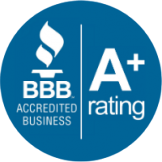East Meadow Roofing: Article About Demystifying Your Roofing Estimate
The removal of your old roof, also known as the tear-off stage, is usually a straightforward process, but certain factors can complicate the job and increase its cost. For instance, the presence of asbestos or other hazardous substances requires additional precautionary work, and some materials are harder to unseat from the roof's base surface.
East Meadow roofer answers a question: Why do roofers charge different prices for the same work?Roofing firms that charge markedly different prices may be performing totally different jobs. For example, a company that charges a minimal amount may not use the same grade of materials, and it's important to consider your future expenses when comparing costs. If you work with a roofer that can't guarantee quality, your low-priced roof installation could grow in cost as time goes on, and you may have to make significant repairs.

It's time for a new roof, but you're not made of money. It's critical that you find an East Meadow roofing firm that can get the job done well without turning your project into a budget nightmare, but obtaining a bunch of competing estimates might just make the process of choosing an installer more confusing. Here's a brief primer on the job characteristics that surprise property owners the most during the planning stages. Although there's no substitute for actually asking a professional to price your new build, it never hurts to have an idea of what to expect.
The most obvious pricing factors include size, difficulty of installation, slope and the number of floors. Surface areas that require more materials or place roofers at greater risk are generally more expensive. The material condition of your current roof and the amount of work required for the tear-off stage is also important.
With the plainly evident points out of the way, we can deal with potentially confusing issues like holes. Fixtures like chimneys and HVAC units need to pass through unobstructed exits, and while it may seem like these gaps should save you on material expenses, they require specialty labor and supplementary building equipment.
Have a question regarding gutters and leaders or Velux skylights? Please ask a roofer from Long Island Roofing of East Meadow.
In order to keep your installation strong and weatherproof, roofers have to surround such points with flashing and special seals that can drive up consumable costs. In addition, these jobs may result in higher labor expenses because they're more time-consuming.
Roofs that consist of a number of smaller sections are more expensive even though they don't require such broad stretches of material. These roofs are much harder for installers to complete accurately, and they require a additional seals at their numerous joints.
Your material selections also affect pricing. While many homeowners simply choose a predefined combination of roof materials offered by their roofing firms, you can just as easily select layers and features designed to help you meet specific energy efficiency goals or foster a certain aesthetic appeal.
Naturally, the options you choose will make a big difference in the price you pay, but you can actually use this to your advantage. If you get an estimate that doesn't seem to make sense or fit within the constraints of your budget, you should ask about alternate materials that might lower the overall cost.
Once you've gotten a nice minimum estimate that makes sense, don't be afraid to investigate how much you'd pay for higher-cost materials. Energy Star-compliant and LEED-certified roofs save a considerable amount of money in the long run, and some are even eligible for tax incentives. Finally, remember that adding livability improvements, such as skylights, might make it much easier to realize higher returns when you sell your house someday.









